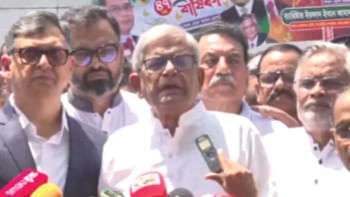Cup facts
The Wills World Cup in 1996 was the sixth cricket World Cup and the second to be held in the Indian subcontinent, with India, Pakistan and Sri Lanka co-hosting the showpiece event.
The tournament's format was given a makeover and three associate teams (Kenya, U.A.E, Holland) were invited, making a total of twelve teams, the highest number for a cricket World Cup till then. There were to be two groups of six with the top four from each group making it through to the quarterfinals.
Sri Lanka, Australia, West Indies, India, Zimbabwe and Kenya made up Group A; South Africa, Pakistan, New Zealand, England, U.A.E and Holland were in Group B.
It was also the first World Cup in which the television umpire could be called upon to settle line decisions (runouts and stumpings).
Three weeks before the tournament started, Sri Lanka's capital city Colombo was rocked by a terrorist attack that left over a thousand people injured. This led to West Indies and Australia refusing to play at Colombo, and as a result their group games against Sri Lanka were forfeited.
Kenya, playing in their first World Cup, defeated the once mighty West Indies by 73 runs in Pune on February 29.
Sri Lanka, the eventual champions posted a world record high score when they blasted giant-killers Kenya to the tune of 398 for five in their group match in Kandy on March 6. The record stood for ten years before Australia, and then South Africa overtook it in the same match in March 2006.
Sri Lanka's Sanath Jayasuriya, the man-of-the-series, had the highest strike rate among batsmen who scored over a hundred runs in the tournament as he piled on 221 electric runs at a strike rate of 131.54.
Indian opener Sachin Tendulkar finished as the highest run-scorer in the 1996 World Cup, with 523 runs (two 100s, three 50s), the highest tournament aggregate in World Cups till he broke his own record seven years later.
Australian opener Mark Waugh, in second place with 484 runs (three 100s, one 50), became the first batsman to score three hundreds in a World Cup, and also the first to score two consecutive hundreds in a Cup.
Gary Kirsten scored an unbeaten 188 against the United Arab Emirates in Rawalpindi on February 16 to create a new record for highest individual score in a World Cup, a record that still stands.
Anil Kumble of India snared the most victims among bowlers, taking fifteen wickets. Waqar Younis was second with thirteen victims.
The best bowling analysis of the 1996 World Cup belonged to Zimbabwean leg-spinner Paul Strang, who took five for 21 against Kenya in Patna on February 27.
Ian Healy was the wicketkeeper with the most dismissals with twelve (9 catches, 3 stumpings), while Rashid Latif of Pakistan was in second place with nine dismissals (7 cathces, 2 stumpings).

 For all latest news, follow The Daily Star's Google News channel.
For all latest news, follow The Daily Star's Google News channel. 



Comments